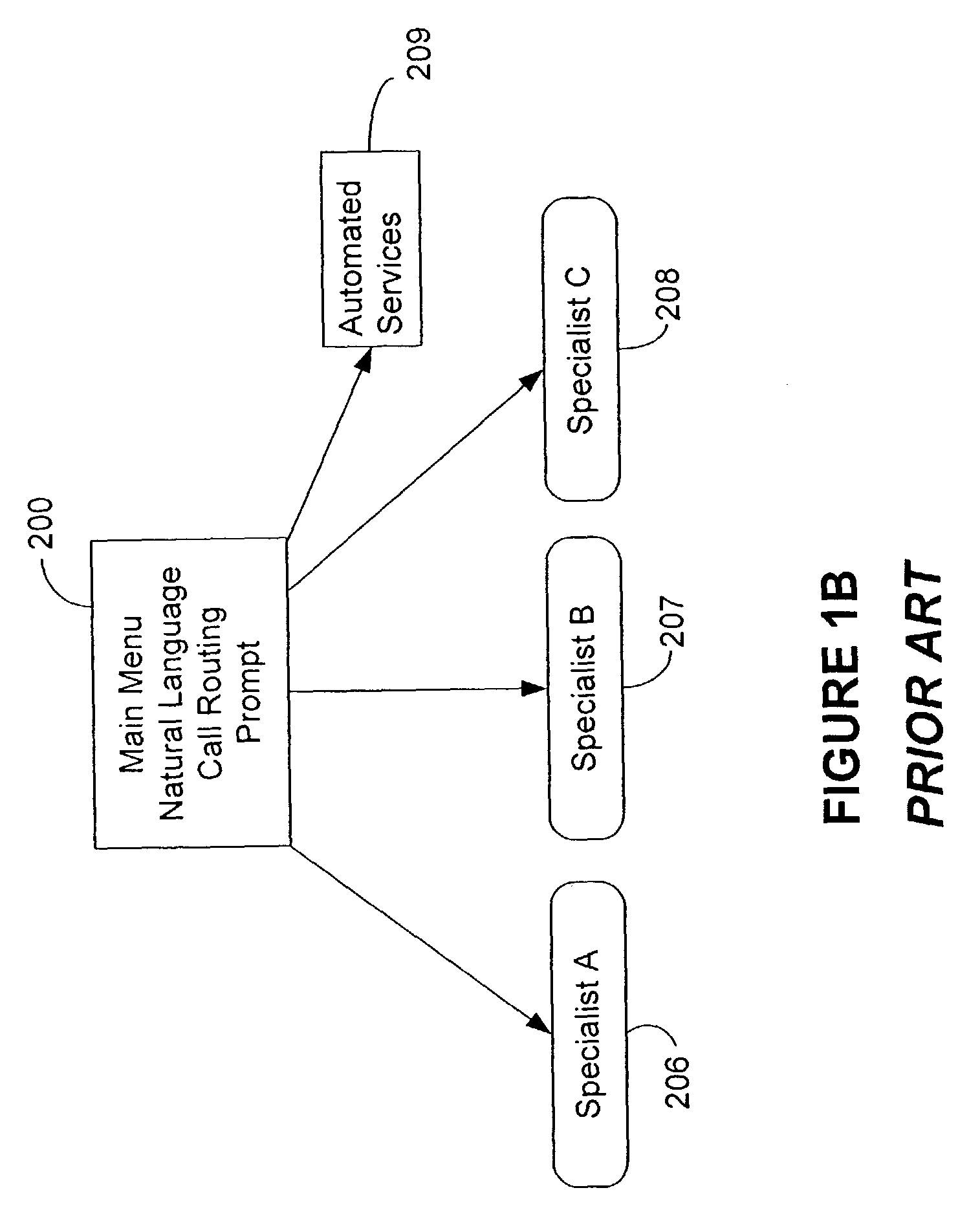Unsupervised training in natural language call routing
- Summary
- Abstract
- Description
- Claims
- Application Information
AI Technical Summary
Benefits of technology
Problems solved by technology
Method used
Image
Examples
Embodiment Construction
[0052]As with regular touch-tone IVR applications, a natural language call routing system requires periodic updates. Such updates insure optimal call center performance as new products or features are introduced. Updating a natural language call routing system follows a process similar to that used during the initial configuration stage described above. The open-ended prompt remains unchanged. When new topics arise, a sufficient number of caller inquiries about the new topics must be collected. The calls must be transcribed and annotated with the correct routing topic. Before the call routing system can confidently recognize and route the new topics, the speech recognition and topic identification models are retrained to arrive at an optimally tuned configuration. The additional training can be done in the normal course of operation, or, in some cases, in the background during off-peak hours, for reasons to be developed below. The statistical grammar models for speech recognition ar...
PUM
 Login to View More
Login to View More Abstract
Description
Claims
Application Information
 Login to View More
Login to View More - R&D
- Intellectual Property
- Life Sciences
- Materials
- Tech Scout
- Unparalleled Data Quality
- Higher Quality Content
- 60% Fewer Hallucinations
Browse by: Latest US Patents, China's latest patents, Technical Efficacy Thesaurus, Application Domain, Technology Topic, Popular Technical Reports.
© 2025 PatSnap. All rights reserved.Legal|Privacy policy|Modern Slavery Act Transparency Statement|Sitemap|About US| Contact US: help@patsnap.com



